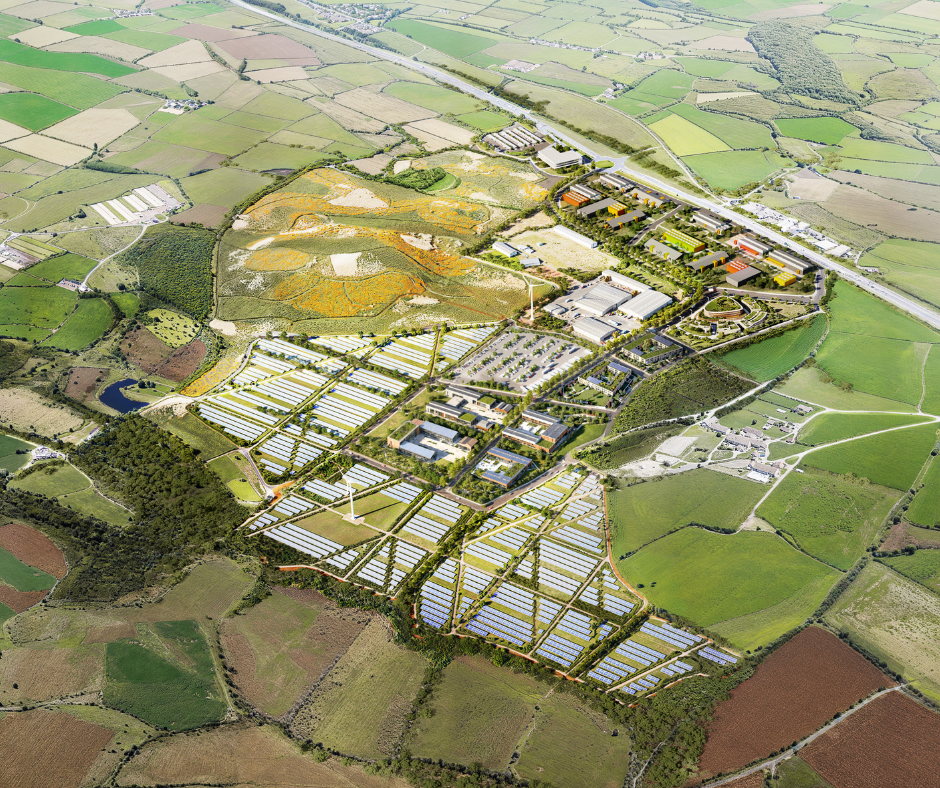
This article has been written by a human.
Artificial intelligence (AI) is being hailed as one of the defining opportunities of our time. On Monday, the UK government unveiled plans to integrate AI into various sectors, highlighting its potential to spur growth and enhance public services. But what could AI mean for the circular economy? Let’s explore the opportunities, challenges, and future possibilities AI offers for our industry.
Current Applications of AI in the Circular Economy
AI is already transforming how we manage waste and resources:
- Optimising Waste Collection: AI algorithms analyse data from bin sensors to predict waste accumulation, allowing for more efficient collection schedules and reducing fuel consumption.
- Automated Waste Sorting: AI-driven systems can quickly and accurately distinguish recyclables from non-recyclables, organic waste, and contaminants, ensuring higher purity of recycled materials.
- Enhanced Material Recovery: By tracking materials across their lifecycle, AI enables better reuse and recycling efforts.
For more details on these innovations, check out Recycleye’s insights and LetsRecycle’s analysis.
Opportunities for Growth and Collaboration
The UK government’s introduction of “AI Growth Zones” could accelerate the integration of AI in industries like ours. While it’s unclear if these zones will directly overlap with our operations, they present opportunities to:
- Foster Partnerships: Collaborate with AI innovators to drive advancements in material sorting, contamination reduction, and resource management. Funding initiatives like UKRI’s AI innovation programme could support such collaborations.
- Leverage National Data Library: Anonymised public and private sector data might improve resource management, optimise waste processing, and predict recycling trends.
Addressing Challenges: Energy Use and Sustainability

AI’s energy demands pose a significant challenge to its sustainable implementation within the circular economy. Training AI models and operating data centres require substantial energy, potentially conflicting with the principles of reducing environmental impact.
Questions to Consider:
- How can we integrate AI without compromising energy efficiency?
- Can renewable energy sources and improved energy efficiency offset the environmental costs of AI?
- Renewable energy and energy efficiency offer solutions, as noted in the Forbes discussion on barriers to AI adoption. Scaling these technologies while mitigating land use conflicts and ecosystem disruptions will be vital.
Engaging the Public and Upskilling the Workforce
AI tools could also play a critical role in changing consumer behaviour around waste reduction and recycling. By providing real time feedback on recycling habits, AI could empower individuals to make more sustainable choices.

Additionally, the integration of AI highlights the need to upskill our workforce. Training employees in AI related roles could ensure they are equipped to manage and operate advanced waste management technologies effectively.
Measuring Success in AI Integration
The impact of AI on the circular economy should be evaluated through various metrics:
- Efficiency Gains: Reducing contamination and improving the quality of recycled materials.
- Environmental Benefits: Lowering carbon emissions and increasing recycling rates.
- Behavioural Insights: Understanding and influencing consumer disposal habits.
Looking Ahead
As the UK positions itself as a leader in AI, the circular economy must seize this moment to align with these advancements. By embracing AI, we can enhance resource management, reduce waste, and create a more sustainable future. However, this integration must be balanced with ethical considerations, such as transparency in data use and equitable access to AI benefits.
CWM’s View
We are always striving to modernise and optimise our operations, ensuring that we stay at the forefront of advancements in waste management and sustainability. While we recognise the transformative potential of AI to enhance resource efficiency and reduce waste, it is equally crucial to implement these technologies responsibly. For us, this means leveraging AI in ways that do not inadvertently increase emissions or undermine our sustainability goals.
An example of our commitment to innovation is our adoption of augmented reality within our educational programmes. This cutting-edge technology has allowed us to create interactive and engaging experiences that demonstrate the importance of the circular economy to schools and communities. Looking ahead, we see AI as a natural progression in our journey to utilise the latest tools to improve operations and engage stakeholders.

As we explore AI’s capabilities, we remain committed to aligning with sustainable practices, whether by integrating renewable energy into AI driven systems or ensuring transparency in data usage. CWM Environmental aims to set a standard for how technology can drive meaningful change within the circular economy by balancing innovation with environmental stewardship.
What are your thoughts? How can our industry harness AI’s potential while adhering to the core principles of the circular economy? Share your ideas and join the conversation.
Frequently Asked Questions
How is AI being used in waste management? AI is revolutionising waste management by enabling automated sorting systems that accurately identify and accurately separate recyclable materials from general waste. These systems utilise advanced image recognition and machine learning techniques to classify items such as plastics, metals, paper, and organic waste. Once identified, robotic arms sort the materials into appropriate categories, enhancing recycling efficiency and reducing contamination. For example, in San Francisco, AI-powered technologies significantly improve recycling outcomes at waste processing facilities.
How has AI helped sustainability? AI has played a pivotal role in advancing sustainability efforts. It accelerates the creation of innovative materials with lower environmental footprints, optimises energy usage, and supports environmental monitoring. AI technologies also forecast natural phenomena like weather patterns and erosion, aiding disaster preparedness. Moreover, it reduces emissions by enhancing energy efficiency and streamlining supply chains to minimise waste and environmental impacts. From tracking air pollution to improving resource utilisation, AI offers a powerful toolkit for addressing ecological challenges.
How can AI help reduce waste in our daily lives? AI can optimise waste collection by using sensors to determine when bins are full, ensuring efficient collection routes and reducing unnecessary fuel use. Additionally, AI-driven sorting systems ensure that recyclable materials are separated accurately, increasing recycling rates and reducing landfill waste.
What role does AI play in energy efficiency? AI can analyse energy usage patterns to identify inefficiencies and recommend optimisations. This includes improving the performance of renewable energy systems, predicting energy demands, and enabling smart grids to balance supply and demand more effectively.
Can AI improve recycling rates? Yes, AI powered systems can identify and sort different types of waste materials with exceptional accuracy. By reducing contamination in recycling streams, these technologies make it easier to process materials into high-quality recycled products.
How does AI support the circular economy? AI aids in tracking materials across their lifecycle, ensuring better reuse and recycling. It also facilitates predictive maintenance of machinery, reducing downtime and waste in industrial processes.
Are there any risks associated with using AI in the circular economy? While AI offers significant benefits, it also raises concerns about energy consumption, data security, and ethical use. Balancing these risks with its advantages requires careful planning and robust regulatory frameworks.
How can businesses leverage AI for sustainability? Businesses can integrate AI into their operations to optimise supply chains, reduce waste, and monitor environmental impacts. For example, AI tools can forecast inventory needs, minimising overproduction and associated waste.
Our latest posts
-
CWM Gwyrdd
CWM Gwyrdd Nantycaws is Wales's most ambitious circular economy development, combining large-scale green infrastructure with practical, community-rooted innovation.
-
Why Circularity Is the Future of Sustainability
Earth Day is often a moment for reflection, but it’s also a prompt for action. Sustainability isn’t a seasonal trend or a one off event. It’s a long term commitment, and circularity is central to how we at CWM approach it.
-
Hop Into Easter Fun at Canolfan Eto!
Canolfan Eto Reuse Village is hosting a fantastic lineup of FREE Easter activities from 14th–25th April, perfect for families with children up to the age of 13.



